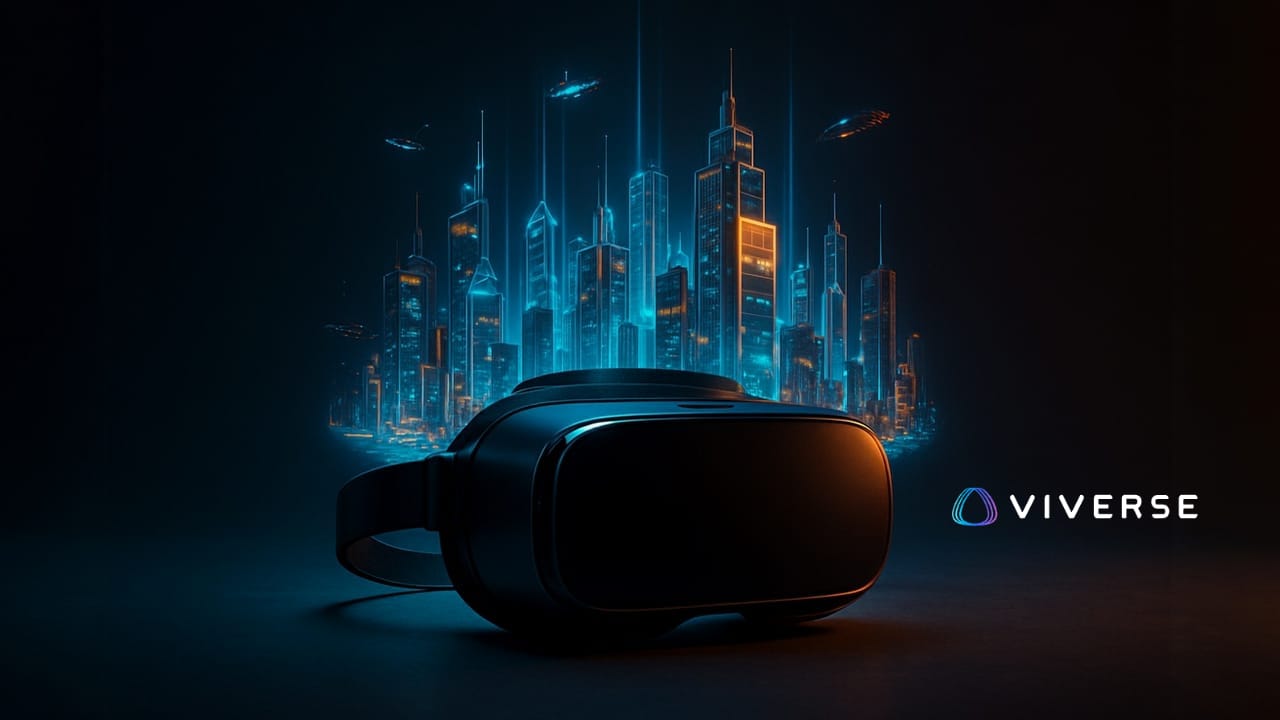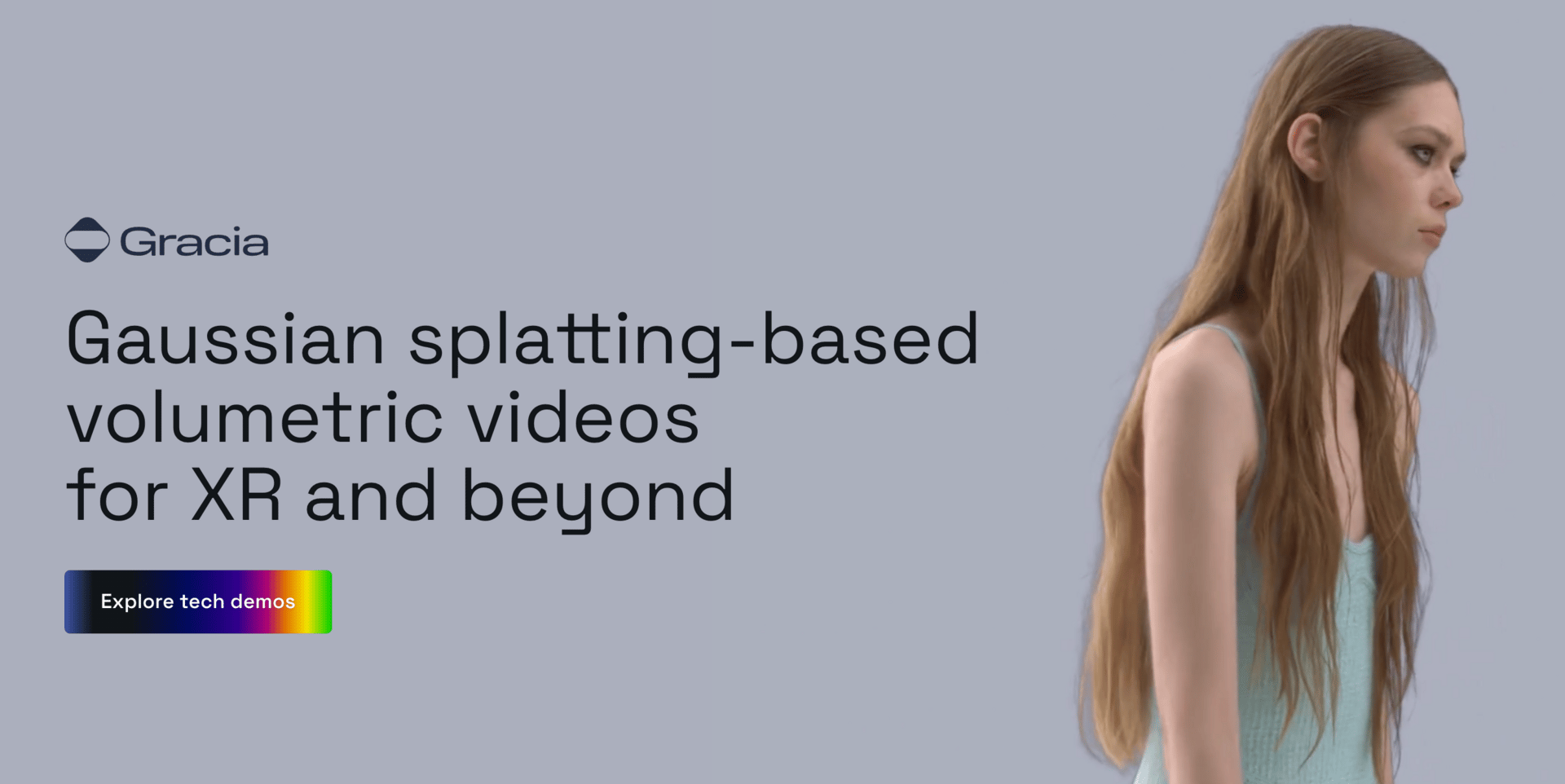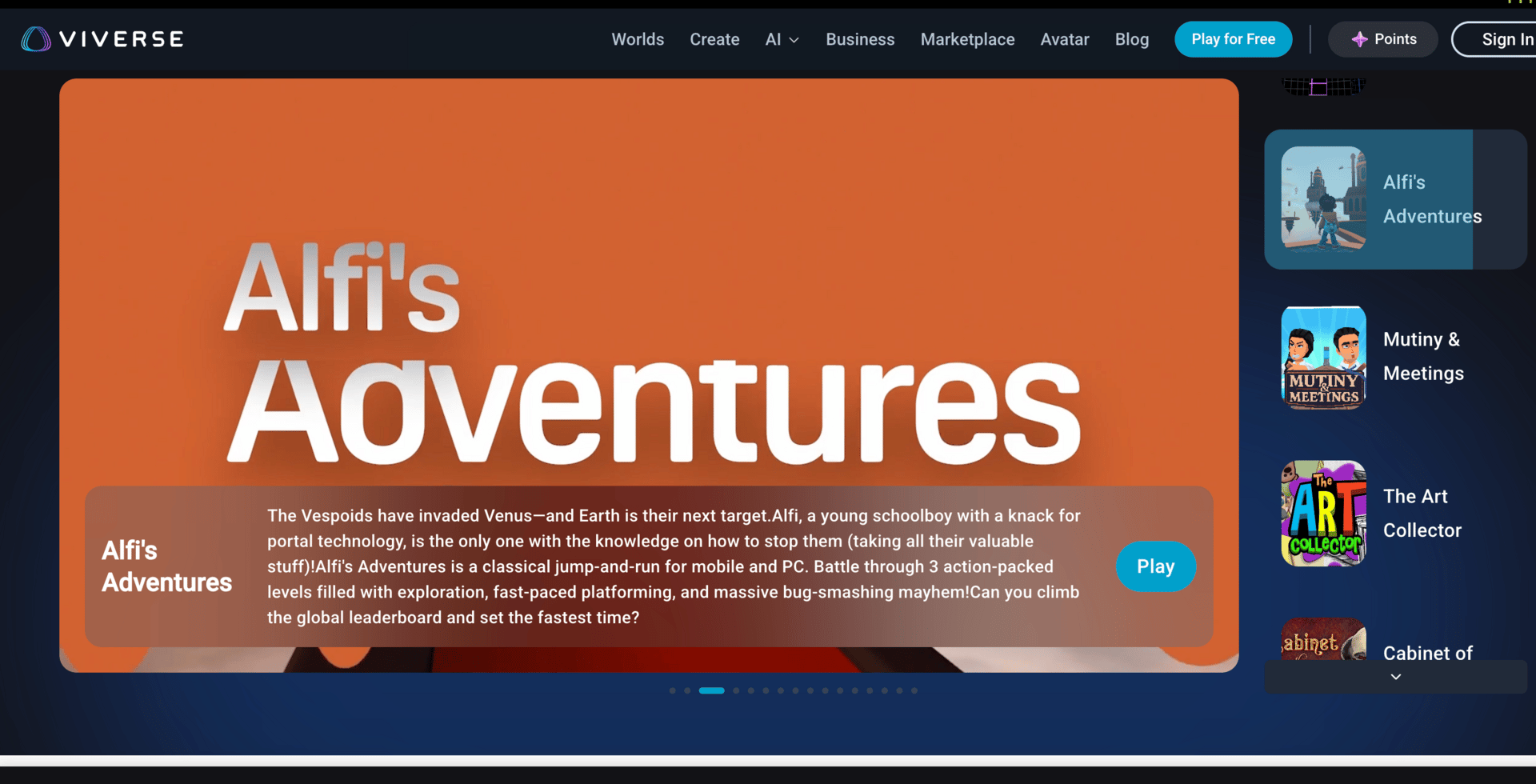- XR Insider
- Posts
- YouTube for Virtual Worlds Has Arrived
YouTube for Virtual Worlds Has Arrived
A behind-the-scenes look at how creators are getting paid to build virtual experiences.

The creator economy is entering the 3D age.
For the first time, you can build a world—and get paid every time someone steps inside.
Viverse, HTC’s new browser-based platform, is redefining how creators monetize immersive experiences. Think YouTube for 3D worlds: upload your project, get instant hosting, earn per view, and even lock special content behind subscriptions or ads.
VR Tool of the Week: Gracia AI
Experience Gaussian Splatting volumetric videos in VR or MR — directly from your headset.
This app pushes the limits of photorealism, streaming volumetric captures with astonishing fidelity.
Highlights:
Works standalone on Quest or PCVR
Renders lifelike motion through Gaussian Splatting
Perfect for creators who want to test ultra-realistic environments
VIVERSE AND THE FUTURE OF 3D CREATOR ECONOMY
HTC’s Head of Growth, Andranik Aslanyan, calls Viverse “a browser-based YouTube for immersive 3D content.”
Built on open-source tech with polygon streaming, it lets creators stream high-density 3D models the same way Netflix streams video—delivering complex worlds instantly, on desktop, mobile, or VR. No downloads, no friction.
For creators, the technology changes everything.
Worlds can be built and hosted for free.
Each view generates payouts, just like a video view.
Advanced developers can use PlayCanvas, while non-technical creators can import Sketchfab models and build directly from the web.
The Creator Program offers guaranteed funding and performance-based payouts. The team is currently favoring shorter, high-impact projects over massive, year-long builds. The philosophy is simple: ship fast, learn, and iterate.
Andranik shared a case study of a cyberpunk Stellarium—a 3D art gallery accessible only to Patreon supporters. This proved that virtual worlds can serve as exclusive membership perks, replacing static web pages with immersive, branded environments. Fans don’t just click—they enter.
The Gold standard for AI news
AI keeps coming up at work, but you still don't get it?
That's exactly why 1M+ professionals working at Google, Meta, and OpenAI read Superhuman AI daily.
Here's what you get:
Daily AI news that matters for your career - Filtered from 1000s of sources so you know what affects your industry.
Step-by-step tutorials you can use immediately - Real prompts and workflows that solve actual business problems.
New AI tools tested and reviewed - We try everything to deliver tools that drive real results.
All in just 3 minutes a day
WHY IT MATTERS - A DEEPER DIVE
The interview with Andranik Aslanyan paints a bold vision: not just a metaverse, but a monetizable 3D Web.
But why should people beyond XR insiders care?
Here’s why this shift is profound—and perhaps inevitable.
1. Attention Moves to Spatial Experiences
In the 2010s, YouTube rewarded attention with a 2D video.
In the 2020s, attention is migrating into immersive spaces. If platforms like Viverse succeed, they will do for 3D what YouTube did for video: turn presence into a currency.
Creators get paid not for clicks or likes, but for the time people spend inside their worlds.
That changes how we value content. A short, emotionally powerful VR moment may be more valuable than a long 2D video.
It blurs the line between “content” and “environment.” Your world is the content.
2. Lowering the Entry Barrier for 3D Creation
The “install friction” has been a giant barrier to adoption for virtual worlds.
Viverse’s browser-first strategy (no download) breaks that. Combine that with AI tools and web SDKs, and creators with limited technical backgrounds can ship 3D worlds faster.
Viverse integrates Sketchfab import and a web builder for non-technical creators.
More advanced creators can use PlayCanvas for fully interactive worlds.
When creation tools become as easy as editing a web page, the volume of worlds—and the creativity inside them—will explode.
3. New Models of Digital Ownership & Engagement
With pay-per-view, subscription access, and in-world commerce, immersive spaces evolve beyond static portfolios.
They become ecosystems:
You can lock parts of a world behind a subscription (like the Stellarium example).
You can sell virtual goods, passes, or unlocks inside a space—not as pixels, but as experiences.
Brands, artists, and educators can launch virtual venues, tours, or installations monetized by engagement.
HUGE XR NEWS (from last week)
Meta pushes Horizon Worlds onto web & mobile
All user-created worlds can now be accessed via browsers and phones, not just VR headsets—likely using cloud streaming under the hood. (learn more)
Unity 6.2 adds deep generative AI features
The new Unity release includes generative tools for textures, animations, and code to speed up content creation. (learn more)
Apple visionOS 26 introduces shared spatial experiences
Spatial widgets, shared sessions, and dynamic depth enhancements arrive for Vision Pro. (learn more)
Blockchain + generative AI for 3D assets emerges in Unity
404-GEN launched a Bittensor-based plugin letting creators generate 3D meshes directly in Unity using AI. (learn more)
Samsung teases Project Moohan headset built on Android XR
Samsung is set to unveil its next mixed-reality headset at its “Worlds Wide Open” event in October, built using Android XR, in partnership with Google and Qualcomm. This could shift more of XR development toward open, cross-platform standards. (learn more)
4. Incentives Align with Quality, Not Clickbait
Traditional 2D platforms often reward frequency or virality over deep value.
With view-based XR payouts:
Rewards follow engagement duration, not just eyeballs.
Creators are motivated to hold attention, not inflate clickbait titles.
Good design, storytelling, and comfort become monetizable strengths.
5. The 3D Web Is the Next Frontier for Digital Infrastructure
We’ve seen mobile apps, responsive web, and AR overlays.
The next major transition is spatial computing. Platforms like Viverse—which stream meshes and environments in real time—help define how that infrastructure will work.
Polygon streaming (streaming 3D meshes on demand) is analogous to video streaming but infinitely more complex.
Efficient mesh, LOD, and compression techniques will become essential infrastructure.
The platforms that master real-time 3D delivery and monetization will act as the “rails” of the spatial economy.
That’s a wrap!!
Talk soon!
Bruno Filkin
Founder, Mastermind VR
VR Strategy Consultation
Ready to explore VR training for your team?
Take the Next Step
Let us review your project and discuss possible development and production details.
👇🏼
How would you rate this episode? |




